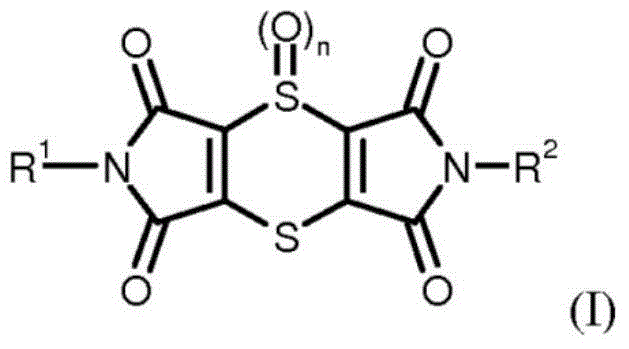Use of dithiine-tetracarboximides for controlling bacterial harmful organisms in useful plants
A technology of tetraimide and harmful organisms, which is applied in the application field of dithiino-tetraimide for preventing and controlling bacterial harmful organisms in useful plants, and can solve consumer dissatisfaction, non-acceptance, and use restrictions And other issues
- Summary
- Abstract
- Description
- Claims
- Application Information
AI Technical Summary
Problems solved by technology
Method used
Image
Examples
Embodiment 1
[0177] Embodiment 1——Pseudomonas syringae disease of tomato
[0178] This example illustrates the efficacy of the composition of the invention against Pseudomonas syringae disease (bacterial spot) of tomato.
[0179] A standard experiment was performed in Spain in 2011 to evaluate the performance of BCS-BB98685 against bacterial spotting caused by the bacterium Pseudomonas syringae pv tomato.
[0180] Grow tomato plants in plastic greenhouses. Plots were manually inoculated with bacterial suspensions and treated with the different experimental chemicals using conventional sprayers. Four chemical sprays were applied at intervals of 7 days. Artificial inoculation was performed on day 2 of the third application.
[0181] Three tomato plants per plot were evaluated for disease 11 days after the last application. Infected leaflets were divided into 3 groups according to disease severity (group 1 = 1 spot / leaflet; group 2 = 2-5 spots / leaflet; group 3 = >5 spots / leaflet). Result...
Embodiment 2
[0187] In vitro assays for calculating ED50 values of microorganisms
[0188] 10 [mu]l of test compound dissolved in dimethyl sulfoxide (DMSO) and LB medium was added to wells of a 96-well microtiter plate. Then, 190 μl of LB liquid medium, which had been corrected to have an appropriate concentration of the bacterial suspension, was added to each well.
[0189] The extinction values in all wells were determined by means of a photometer at a wavelength of 620 nm. The liquid in the microplate was then transferred to a shake flask at 28°C and 85% relative humidity overnight.
[0190] At the end of the inoculation, the growth of the test organisms was measured again with a photometer at a wavelength of 620 nm. The difference between the two extinction values (measured before and after inoculation) is proportional to the growth of the test organism.
[0191] Dose-response curves were calculated from the delta extinction data from the various assay concentrations and the d...
PUM
 Login to View More
Login to View More Abstract
Description
Claims
Application Information
 Login to View More
Login to View More - R&D
- Intellectual Property
- Life Sciences
- Materials
- Tech Scout
- Unparalleled Data Quality
- Higher Quality Content
- 60% Fewer Hallucinations
Browse by: Latest US Patents, China's latest patents, Technical Efficacy Thesaurus, Application Domain, Technology Topic, Popular Technical Reports.
© 2025 PatSnap. All rights reserved.Legal|Privacy policy|Modern Slavery Act Transparency Statement|Sitemap|About US| Contact US: help@patsnap.com



